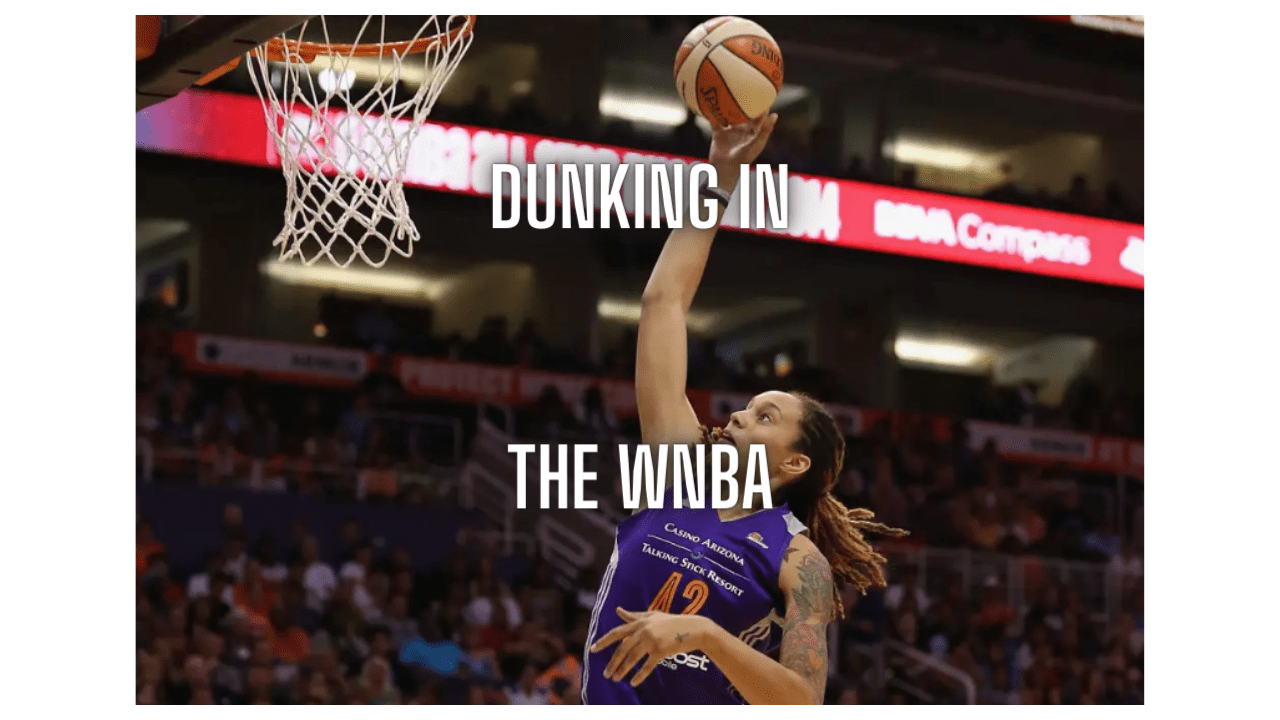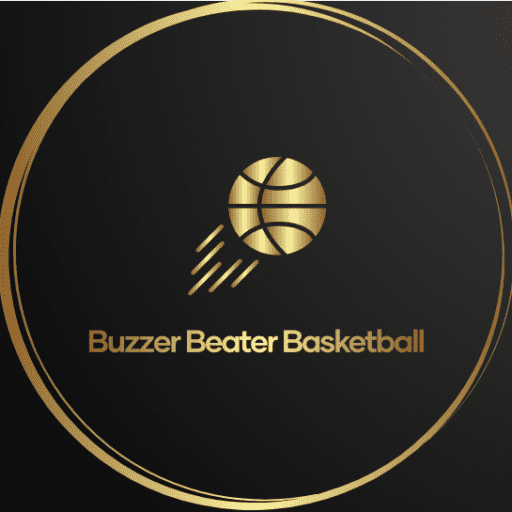Dunking in the WNBA: A Game-Changing Phenomenon Redefining Women’s Basketball

Dunking in the WNBA: Redefining Women’s Basketball Through Athleticism and Skill
In the ever-evolving landscape of professional sports, the WNBA stands as a beacon of progress and empowerment for women athletes worldwide. Since its inception, the league has continuously pushed boundaries, challenging stereotypes, and reshaping perceptions of women’s basketball. One of the most significant developments in recent years has been the rise of dunking, a skill once considered exclusive to the men’s game.
Traditionally, the idea of women dunking in professional basketball seemed far-fetched, if not entirely implausible. However, in recent years, a new generation of players has shattered this misconception, demonstrating remarkable athleticism and skill on the court. These athletes have not only redefined what is possible in women’s basketball but have also sparked a cultural and societal shift, challenging outdated gender norms and inspiring countless young athletes along the way.
The emergence of dunking in the WNBA represents more than just a display of physical prowess; it symbolizes progress, empowerment, and inclusivity within the realm of sports. Pioneering players such as Lisa Leslie, Candace Parker, and Brittney Griner have become trailblazers, showcasing their dunking abilities and paving the way for future generations of female athletes.
Behind every successful dunk lies a story of dedication, hard work, and perseverance. The modern WNBA athlete is the product of rigorous training regimens, advanced skill development programs, and unwavering determination. These players have honed their craft to perfection, pushing the boundaries of what was once thought possible in women’s basketball.
As dunking becomes more commonplace in the WNBA, its impact extends far beyond the confines of the basketball court. The sight of a woman soaring through the air and throwing down a thunderous dunk has captivated fans worldwide, garnering attention and admiration for the league and its players. With each dunk, stereotypes are shattered, barriers are broken, and new possibilities emerge for women in sports.
Exploration of the Pioneering Players Who Have Shattered Stereotypes With Their Dunking Abilities
The rise of dunking in the WNBA can be attributed in large part to the pioneering players who have dared to defy expectations and push the boundaries of what is possible in women’s basketball. These athletes have not only shattered stereotypes with their dunking abilities but have also become trailblazers and role models for future generations of female athletes.
One such pioneer is Lisa Leslie, a legendary WNBA player who is widely regarded as one of the greatest basketball players of all time. Leslie made history in 2002 when she became the first woman to dunk in a WNBA game, breaking down barriers and challenging perceptions of women’s basketball in the process. Her dunking prowess not only showcased her incredible athleticism but also paved the way for other female athletes to follow in her footsteps.
Since Leslie’s groundbreaking dunk, numerous other players have emerged as dunking phenoms in the WNBA, including Candace Parker, Brittney Griner, and Liz Cambage, to name just a few. These athletes have not only demonstrated their ability to dunk with power and precision but have also elevated the level of excitement and competitiveness in the league, attracting new fans and garnering widespread attention for women’s basketball.
Athleticism and Skill Development in the WNBA
Examination of the Rigorous Training Programs and Athletic Advancements Within the League
Professional basketball demands peak physical condition and superior athleticism, and WNBA players spare no effort in achieving and maintaining these standards. From strength and conditioning workouts to agility drills and plyometrics, players undergo comprehensive training regimens tailored to enhance their speed, strength, and overall athleticism. These programs are designed by top-notch trainers and coaches who understand the unique demands of the game and work tirelessly to help players reach their full potential.
Furthermore, advancements in sports science and technology have revolutionized the way athletes train and prepare for competition. From wearable fitness trackers to state-of-the-art recovery tools, WNBA players have access to cutting-edge resources that enable them to optimize their performance and stay ahead of the competition. Whether it’s monitoring heart rate variability or analyzing biomechanical data, these tools provide valuable insights that help players fine-tune their training and maximize their athletic capabilities.
Investment in Youth Development Programs and the Cultivation of Talent from Grassroots Levels
At the heart of the WNBA’s success lies a commitment to fostering talent and nurturing the next generation of basketball stars. This investment begins at the grassroots level, where youth development programs provide aspiring athletes with the opportunity to learn and grow in a supportive and nurturing environment.
From youth leagues and camps to developmental academies and scouting networks, the WNBA’s youth development initiatives offer young players access to top-tier coaching, state-of-the-art facilities, and competitive opportunities that help them hone their skills and realize their full potential. These programs not only serve as a pipeline for future WNBA talent but also instill important values such as discipline, teamwork, and perseverance that extend far beyond the basketball court.
Moreover, the WNBA’s commitment to diversity and inclusion ensures that talent is cultivated from all corners of the globe, regardless of background or socioeconomic status. Through initiatives such as the Jr. NBA program and international scouting efforts, the league seeks to identify and nurture talent from diverse communities and provide opportunities for players to pursue their basketball dreams at the highest level.
Looking Ahead: The Future of Dunking in the WNBA
Speculation on Potential Rule Changes or Adaptations to Further Encourage and Showcase Dunking in Women’s Basketball
As dunking continues to gain prominence in the WNBA, there may be opportunities to further encourage and showcase this exciting aspect of the game through potential rule changes or adaptations.
One possible adaptation could be lowering the rim height in women’s basketball to match that of the men’s game. While this may seem like a drastic change, it could help level the playing field and create more opportunities for dunking in women’s basketball, however it should be noted that many current WNBA players are against this idea. Additionally, implementing rules that incentivize dunking, such as awarding extra points for dunks or providing bonuses for highlight-reel dunks, could further encourage players to showcase their dunking abilities on the court.
Another consideration could be expanding the dunk contest during All-Star weekend to include female players. This would provide an additional platform for female dunkers to showcase their skills and generate excitement for dunking in women’s basketball.
Ultimately, any rule changes or adaptations should be made with careful consideration for the integrity of the game and the safety of the players. However, by exploring creative solutions and thinking outside the box, the WNBA can continue to elevate dunking as a central aspect of the women’s game and draw in a larger audience.
Discussion on the Evolving Identity of the WNBA and Its Fan Base, Influenced by the Rise of Dunking as a Game-Changing Phenomenon
As dunking continues to capture the imagination of fans around the world, it will undoubtedly play a significant role in shaping the evolving identity of the WNBA and its fan base.
Dunking has the power to attract new fans to the sport of women’s basketball and broaden the league’s appeal beyond traditional audiences. With its electrifying displays of athleticism and highlight-reel dunks, the WNBA has the potential to captivate a global audience and cement its status as a premier sports league.
Moreover, dunking represents a symbol of empowerment and defiance against traditional gender norms, resonating with fans who are drawn to the league’s commitment to equality and inclusivity. As the WNBA continues to embrace its identity as a trailblazer for women in sports, dunking will serve as a powerful reminder of the incredible talent and potential of female athletes.
FAQ – Dunking And The WNBA
-
Can women dunk in the WNBA?
- Yes, women can and do dunk in the WNBA. It has become a more common occurrence in recent years, with several players showcasing their dunking abilities during games.
-
Who was the first woman to dunk in a WNBA game?
- Lisa Leslie is widely recognized as the first woman to dunk in a WNBA game. She achieved this milestone in 2002 while playing for the Los Angeles Sparks.
-
How many women have dunked in WNBA history?
- As of now, several women have dunked in WNBA history, including Lisa Leslie, Brittney Griner, Candace Parker, Liz Cambage, and others.
-
Are there height requirements for dunking in the WNBA?
- While height can certainly be an advantage in dunking, there are no strict height requirements for dunking in the WNBA. Players of various heights have successfully dunked in games.
-
How often do dunks occur in WNBA games?
- Dunks are still relatively rare occurrences in WNBA games compared to men’s basketball, but they are becoming more frequent. The frequency of dunks varies from season to season and depends on the skill level of the players.
-
Are dunks worth more points in the WNBA?
- No, dunks are not worth more points in the WNBA. They are treated the same as any other field goal, regardless of how they are scored.
-
Why are dunks more common in men’s basketball than women’s?
- There are various factors that contribute to the difference in dunk frequency between men’s and women’s basketball, including differences in height, athleticism, and playing style. However, as women’s basketball continues to evolve, dunking is becoming more common.
-
What impact do dunks have on the game?
- Dunks can have a significant impact on the game by energizing players and fans, shifting momentum, and intimidating opponents. They can also serve as highlight-reel plays that generate excitement and attention for the WNBA.
-
How do players develop the ability to dunk?
- Developing the ability to dunk requires a combination of strength, athleticism, and technique. Players often work on improving their vertical jump, explosiveness, and overall conditioning through dedicated training programs.
-
Do shorter players ever dunk in the WNBA?
- While dunking is more common among taller players due to their natural advantage in height and reach, shorter players have also been known to dunk on occasion. It requires exceptional athleticism and timing.
-
Are there any rules specific to dunking in the WNBA?
- There are no specific rules pertaining to dunking in the WNBA. Dunking is subject to the same rules and regulations as any other field goal attempt.
-
What is the most memorable dunk in WNBA history?
- There have been many memorable dunks in WNBA history, but Lisa Leslie’s dunk in 2002 is often cited as one of the most iconic moments in the league’s history.
-
Do WNBA players practice dunking during training?
- Yes, many WNBA players incorporate dunking drills into their training routines to improve their dunking abilities and overall athleticism.
-
What are some of the challenges of dunking in women’s basketball?
- Some challenges of dunking in women’s basketball include height limitations, physical strength, and the timing required to execute a successful dunk against tough defense.
-
Have any WNBA players won dunk contests?
- While the WNBA has not held official dunk contests like the NBA, several WNBA players have showcased their dunking skills in All-Star events and exhibition games.
-
Do dunks in the WNBA receive as much attention as in men’s basketball?
- While dunks in the WNBA may not receive as much attention as in men’s basketball, they are still celebrated and admired by fans, particularly as the frequency of dunks increases.
-
What impact do dunks have on player endorsements and popularity?
- Dunks can elevate a player’s profile and increase their popularity among fans, which can lead to opportunities for endorsements and sponsorships.
-
Are there any rules against hanging on the rim after a dunk in the WNBA?
- Like in men’s basketball, players are generally not allowed to hang on the rim after a dunk in the WNBA unless it is for safety reasons or to prevent injury.
-
Do WNBA players dunk in practice as often as in games?
- Some WNBA players may practice dunking regularly in training sessions, while others may reserve dunk attempts for game situations.
-
How has the frequency of dunking in the WNBA changed over the years?
- Dunking has become more frequent in the WNBA in recent years as players continue to push the boundaries of athleticism and skill. As the league evolves, we can expect to see even more dunks in the future.



